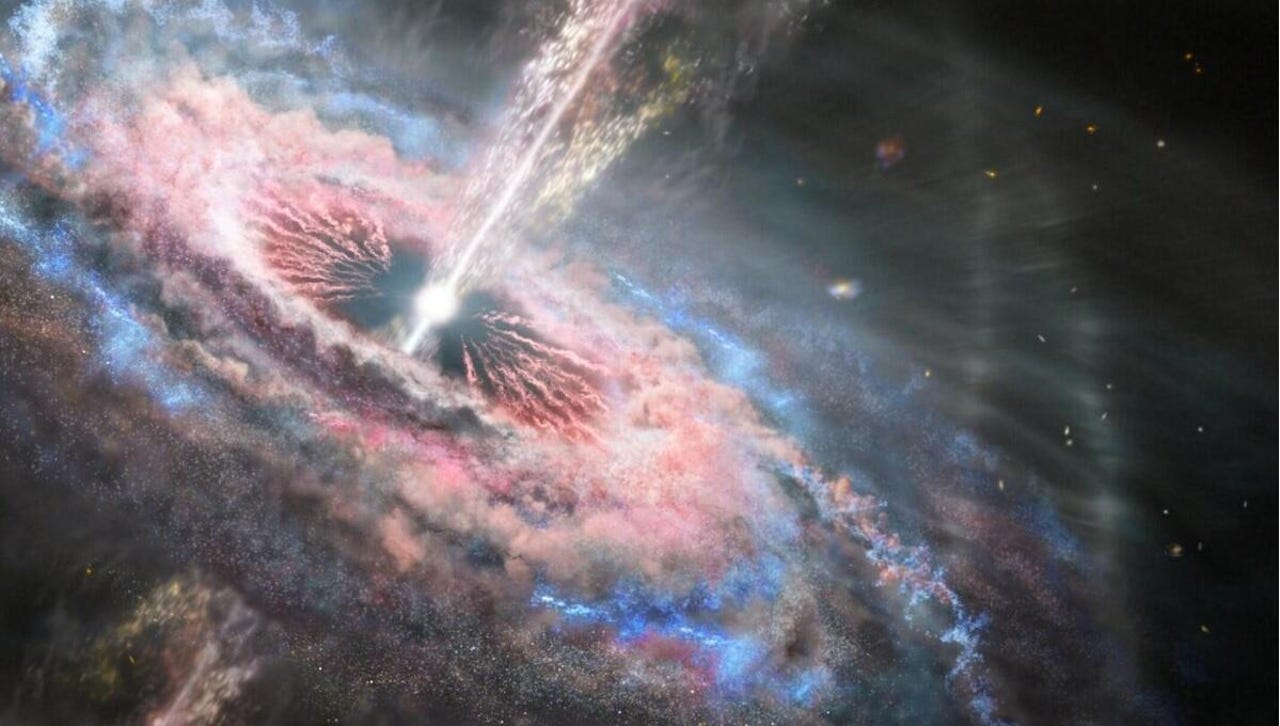































 Image: NASA
Image: NASA After much anticipation, NASA is releasing the first images taken by the James Webb Space Telescope (JWST) mission this week, including the deepest image of our universe that has ever been taken.
"This is farther than humanity has ever looked before," NASA Administrator Bill Nelson recently said, calling the telescope and its images "nothing short of a real scientific feat."
While NASA was slated to release the images on Tuesday, President Joe Biden was honoured to share the first image on Monday at the White House.
You can watch Biden release the image at 5:30 p.m. EDT on NASA TV, which is available on the NASA Live page as well as on the agency's Youtube channel.
On Tuesday, July 12, NASA will kick things off with opening remarks at 9:45 a.m. EDT. The images themselves will be released, along with data from the telescope at 10:30 a.m. These events also will be viewable on NASA TV.
On Wednesday, July 13, at 3 p.m. on NASA TV, the agency will air an event called "Webb's First Full-Color Images Explained."
The JWST was launched in December from Europe's Spaceport in Kourou, French Guiana, as part of an international program between NASA, the European Space Agency, and the Canadian Space Agency. Located one million miles away from Earth, the telescope was developed to study the evolution of our solar system.
The photos that will be released were chosen for their spectacular color imagery, NASA said, as well as to demonstrate the breadth of science that the JWST is supporting.
Below are the first images. Check out more information about them and Tuesday's reveal here.
NASA's James Webb Space Telescope reveals emerging stellar nurseries and individual stars in the Carina Nebula that were previously obscured.
NASA, ESA, CSA, and STScIThe Carina Nebula is one of the largest and brightest nebulae in the sky, located approximately 7,600 light-years away in the southern constellation Carina. Nebulae are stellar nurseries where stars form. The Carina Nebula is home to many massive stars that are several times larger than the Sun.
NASA's James Webb Space Telescope has captured the distinct signature of water, along with evidence for clouds and haze, in the atmosphere surrounding a hot, puffy gas giant planet orbiting a distant Sun-like star.
NASA, ESA, CSA, and STScIWASP-96 b is a giant planet outside our solar system, composed mainly of gas. The planet, located nearly 1,150 light-years from Earth, orbits its star every 3.4 days. It has about half the mass of Jupiter, and its discovery was announced in 2014.
In these images of the Southern Ring planetary nebula, the Webb telescope shows a dying star cloaked by dust and layers of light.
Credits: NASA, ESA, CSA, and STScIThe Southern Ring, or "Eight-Burst" nebula, is a planetary nebula -an expanding cloud of gas surrounding a dying star. It is nearly half a light-year in diameter and is located approximately 2,000 light-years away from Earth.
In an enormous new image, NASA's James Webb Space Telescope reveals never-before-seen details of galaxy group "Stephan's Quintet."
NASA, ESA, CSA, and STScIAbout 290 million light-years away, Stephan's Quintet is located in the constellation Pegasus. It is notable for being the first compact galaxy group ever discovered in 1877. Four of the five galaxies within the quintet are locked in a cosmic dance of repeated close encounters.
NASA's James Webb Space Telescope has produced the deepest and sharpest infrared image of the distant universe to date. Known as Webb's First Deep Field, this image of galaxy cluster SMACS 0723 is overflowing with detail.
NASA, ESA, CSA, and STScIThese massive foreground galaxy clusters magnify and distort the light of objects behind them, permitting a deep field view into both the extremely distant and intrinsically faint galaxy populations.
 Горячие метки:
3. Инновации
1. Космос
Горячие метки:
3. Инновации
1. Космос